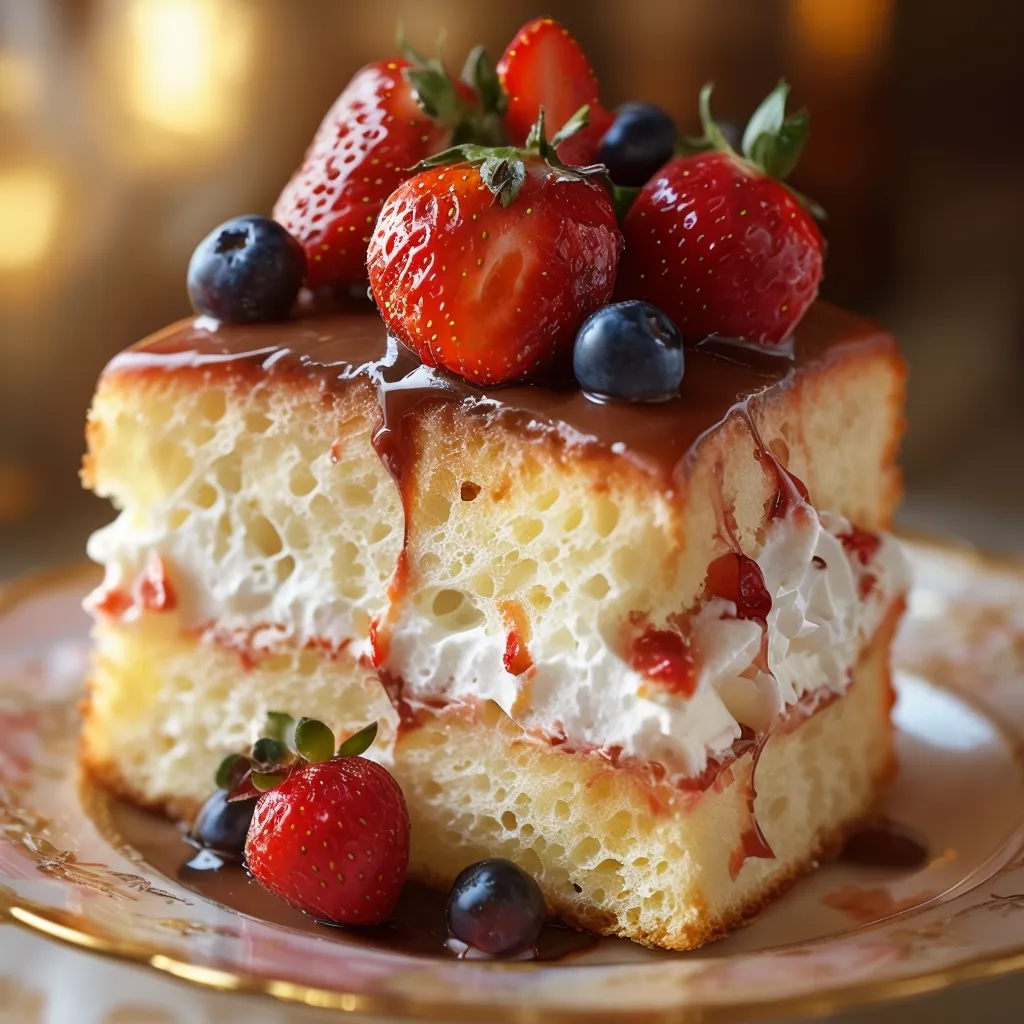Discover the light and airy delight of Pan di Spagna, the quintessential Italian sponge cake. This versatile cake serves as the foundation for many beloved Italian desserts and showcases the simple elegance of Mediterranean baking. If you’re looking for a perfect Pan di Spagna Italian Sponge Cake Recipe, read on to get started.
Ingredients
- 4 large eggs, at room temperature
- 1 cup granulated sugar
- 1 cup all-purpose flour
- 1 tsp baking powder
- 1/4 tsp salt
- 1 tsp vanilla extract
- Zest of 1 lemon (optional)
Instructions
- Preheat your oven to 350°F (175°C). Grease and flour a 9-inch springform pan.
- In a large bowl, beat eggs and sugar on high speed for about 15 minutes, until the mixture is pale and tripled in volume.
- In a separate bowl, sift together flour, baking powder, and salt.
- Gently fold the dry ingredients into the egg mixture, adding one-third at a time. Be careful not to deflate the batter.
- Add vanilla extract and lemon zest (if using), folding gently to combine.
- Pour the batter into the prepared pan and smooth the top with a spatula.
- Bake for 30-35 minutes, or until a toothpick inserted in the center comes out clean.
- Allow the cake to cool in the pan for 10 minutes, then remove the sides of the springform pan and let it cool completely on a wire rack.
For a true Italian touch, serve slices of Pan di Spagna with a homemade Limoncello or a dollop of Italian Mascarpone Cream.

The Versatility of Pan di Spagna
Pan di Spagna, which literally translates to “Spanish Bread,” is the Italian version of a génoise cake. Despite its name, it’s a staple in Italian pastry-making. Its light, airy texture makes it perfect for layered cakes, trifles, and other desserts that require a sponge base.
This cake is often used in classic Italian desserts like Tiramisu or Zuppa Inglese. Its neutral flavor allows it to pair well with a variety of fillings and frostings, making it a favorite among home bakers and professional pastry chefs alike.
Q&A Section
Q: Why is it important to beat the eggs and sugar for so long?
A: The long beating time incorporates air into the batter, which is crucial for achieving the characteristic light and spongy texture of Pan di Spagna. This step replaces the need for additional leavening agents.
Q: Can I make this cake ahead of time?
A: Yes, Pan di Spagna can be made 1-2 days in advance. Wrap it tightly in plastic wrap and store at room temperature. For longer storage, you can freeze it for up to 3 months.
Q: How can I prevent my cake from deflating?
A: Be gentle when folding in the dry ingredients and avoid overmixing. Also, don’t open the oven door during the first 20 minutes of baking, as the sudden temperature change can cause the cake to sink.
Q: What are some variations of this recipe?
A: You can add cocoa powder for a chocolate version, or replace some of the flour with ground nuts for added flavor and texture. For more Mediterranean recipes variations, check out our Italian Cuisine.
To learn more about the rich history of Italian baking, visit this comprehensive guide on Italian Pasticceria from Academia Barilla.
Enhance your Mediterranean baking skills by exploring our other regional cake recipes, such as the Greek Portokalopita or the Spanish Tarta de Santiago.

1 thought on “Pan di Spagna: Classic Italian Sponge Cake Recipe”